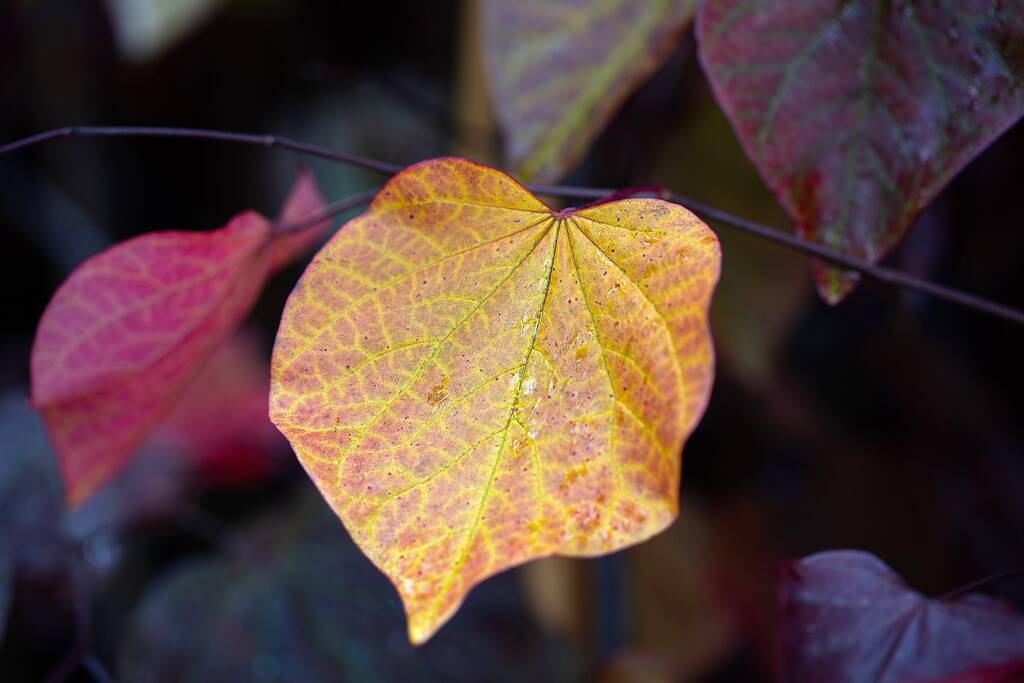The Cercis can Forest Pansy Tree, commonly known as the Purple-Leaf Redbud, is a highly ornamental variety of Cercis canadensis prized for its unique foliage and seasonal beauty. Originally selected in Tennessee, USA, this cultivar was discovered at Forest Nursery and quickly gained recognition for its dramatic colour and striking year-round interest.
In early spring, before the leaves appear, the tree produces a profusion of pea-like flowers in soft pink tones. These blooms emerge directly on bare branches, a feature that creates a bold and eye-catching display, while also attracting early pollinators. The flowering phase signals the end of winter and the arrival of spring, making it a standout feature in gardens at this time of year.
Once flowering has finished, the distinctive heart-shaped leaves unfurl. Initially deep purple, the foliage gradually matures into purple-green shades through the summer months, maintaining a dark, rich presence that contrasts well with surrounding greenery. This colouring is unusual among ornamental trees, making Forest Pansy especially valuable in planting schemes where depth of tone and contrast are desired.
The highlight of this tree comes in autumn, when the foliage transforms into an extraordinary mix of fiery shades. Brilliant reds, glowing oranges, and golden yellows combine to deliver a striking seasonal display, ensuring that Forest Pansy remains attractive even as the year winds down.
Its overall form is rounded and spreading, with an elegant branching habit that enhances its ornamental appeal. After ten years of growth, the Cercis can Forest Pansy Tree typically reaches around 6 metres in height with a spread of 6–9 metres, creating a broad canopy that provides both beauty and structure within the garden.
This cultivar thrives in fertile, well-drained soils and benefits from a position in full sun to achieve the best flower production and leaf colour. In hotter climates, it can also tolerate partial shade, though leaf colour is usually strongest in sunnier spots. Care is relatively simple, with little pruning required beyond shaping or removing crossing branches.
The Cercis can Forest Pansy Tree is particularly well-suited as a specimen tree, where its seasonal displays can be fully appreciated, but it can also be incorporated into mixed borders or used as an accent plant in small gardens. Its combination of early spring flowers, colourful summer foliage, and dramatic autumn display ensures year-round appeal.
The Cercis can Forest Pansy Tree is a medium-sized ornamental tree, reaching approximately 6 metres in height and 6–9 metres in spread after ten years. Its broad, rounded canopy and graceful branching structure provide strong visual impact, making it ideal as a specimen tree.
In spring, pink pea-like flowers appear in clusters along bare stems and branches, creating a striking early-season display. Heart-shaped leaves follow, emerging a deep purple before softening to purple-green in summer. The foliage then shifts to brilliant reds, oranges, and yellows in autumn, ensuring multiple seasons of interest.
This tree thrives in well-drained soil and performs best in full sun, though it tolerates partial shade. Its size and spreading habit make it particularly effective as a garden focal point or feature tree. Compact enough for smaller landscapes yet bold in appearance, it brings colour and charm throughout the year.





